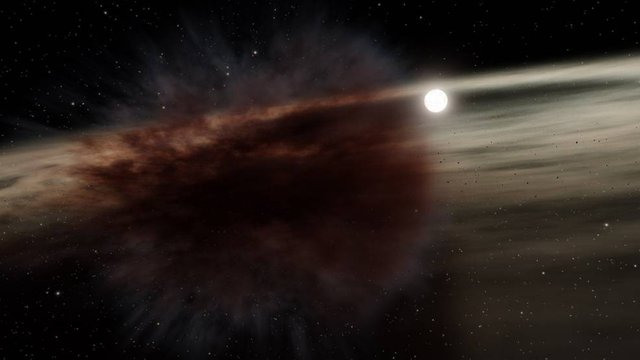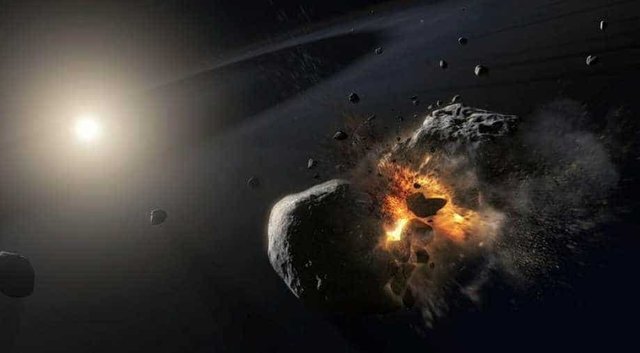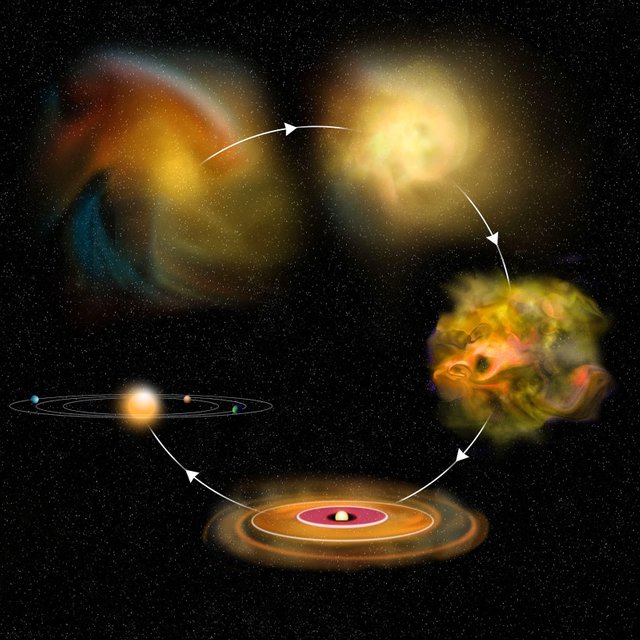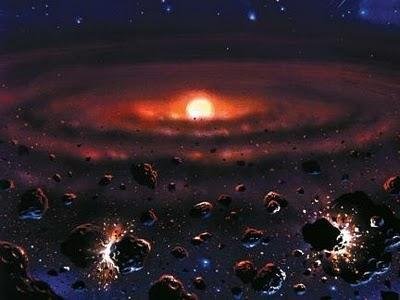Colossal asteroid crash.
Colossal asteroid crash.

Souce
NASA has detected the collision of two giant asteroids, but calm down because this has not been here, it has not been in the solar system and these are the images with which NASA has illustrated this news.

Souce
This star is, as I said, very young, it is only 10 million years old, it is somewhat older than the sun and around this young star a multitude of rocky bodies called planetesimals are forming, planetesimals are objects that we could compare with young or newborn asteroids since they are rocky and range from a kilometer in diameter, to a few hundred kilometers in diameter.

Souce
Protoplanets are the germs of future planets, for example in our solar system it is believed that Ceres is one of the surviving protoplanet protocols of the planet formation period.

Souce
Thanks to the moment when the cloud passed in front of its star and briefly blocked out the light, astronomers call this a transit, but it may be difficult to determine which objects collided with, astronomers relied on knowledge of size, brightness of the star and calculated the size of the cloud shortly after the impact and finally observed the speed with which the cloud was dispersing, with this the astronomers were able to estimate the size of the objects that collided and have calculated that they were quite large About 530 kilometers in diameter, it is comparable to the giant asteroid Vesta that lies between the orbits of Mars and Jupiter.
They have also calculated that the collision must have pulverized the two original objects creating enough energy and heat to vaporize some of the material and disperse fragments and create new asteroids, what has been seen in this star 330 light-years away is an example of how it was the solar system when it was barely 10 million years old.
Thank you for visiting my blog. If you like posts about #science, #planet, #politics, #rights #crypto, #traveling and discovering secrets and beauties of the #universe, feel free to Follow me as these are the topics I write about the most. Have a wonderful day and stay on this great platform :) :)